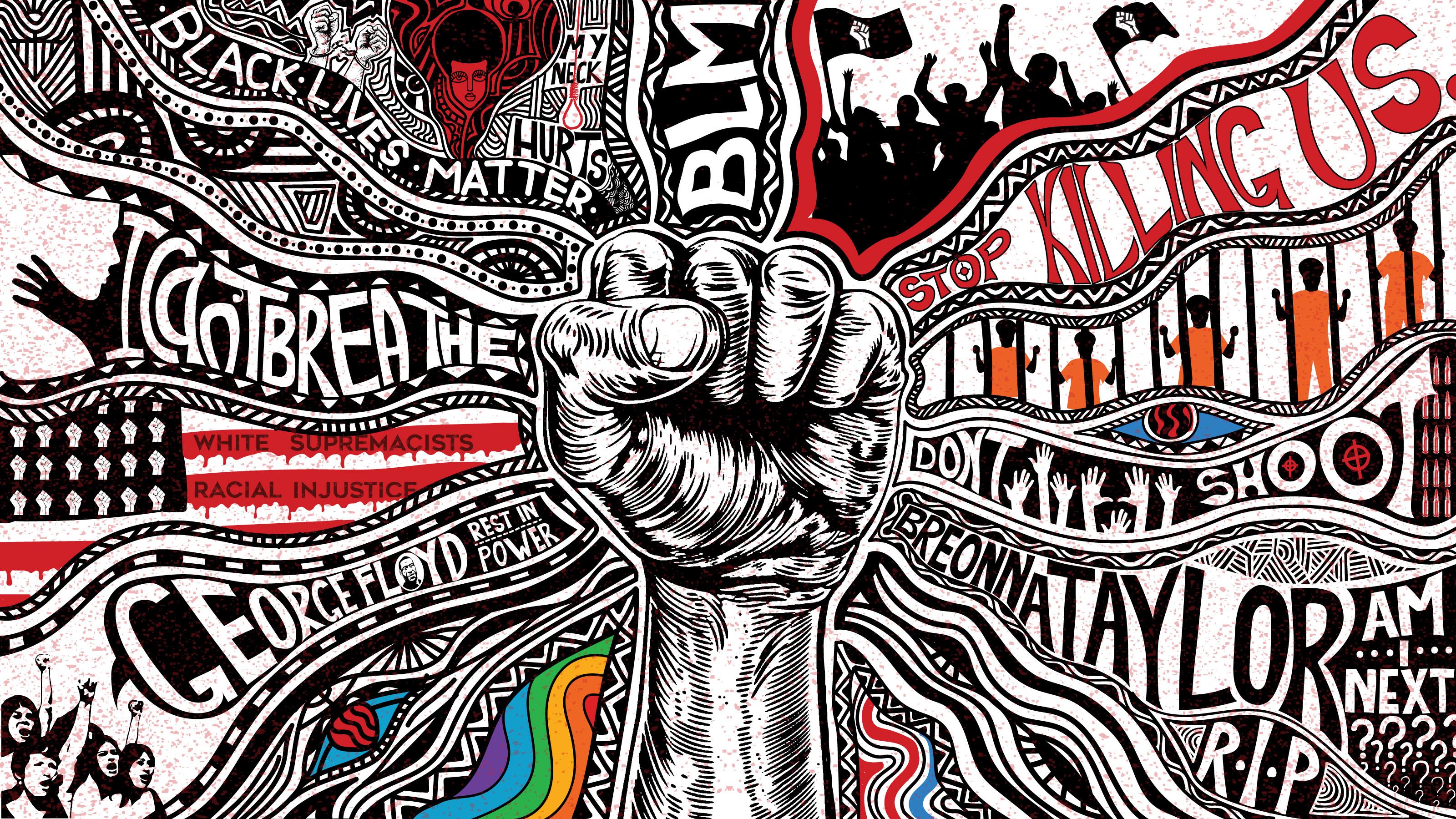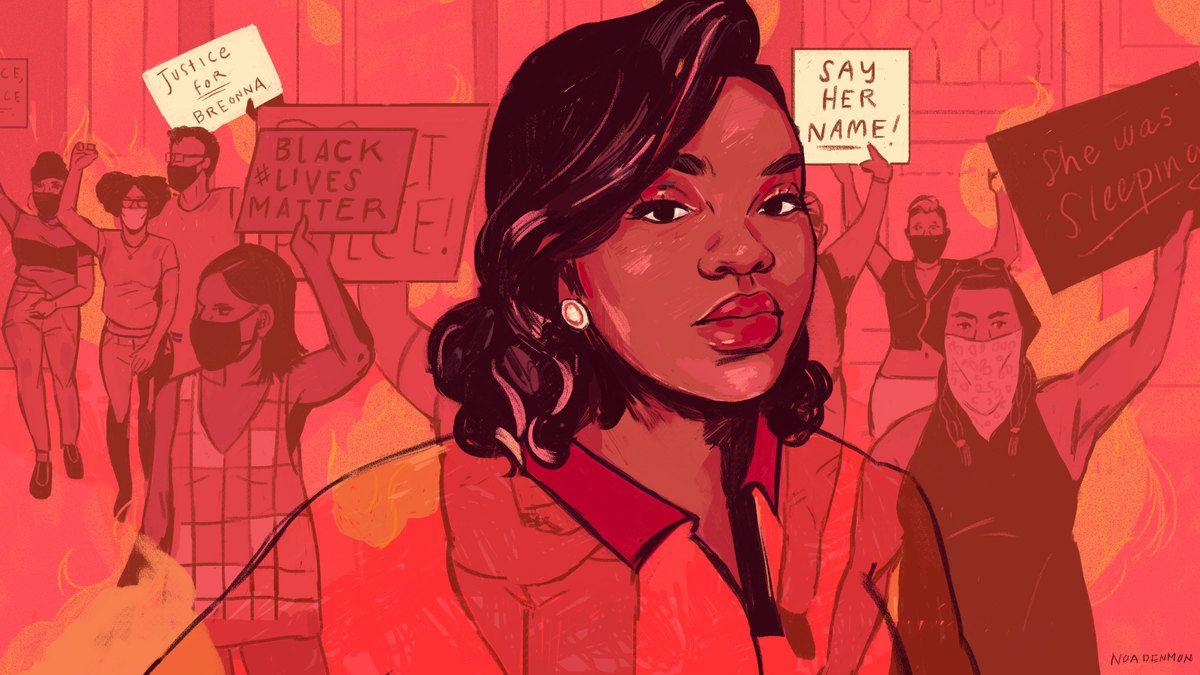The Spirit of Rebellion Grows During America’s Summer of Protest
The killings of George Floyd, Breonna Taylor, and so many other Black citizens has galvanized another generation of organizers to take to the streetsThe early June sunshine creeps behind an afternoon cloud in Washington, D.C. The humidity is oppressive, a sticky haze that slows the psyche and makes one’s feet feel like they’re stuck in sand. Yet across 16th Street Northwest, near the black gates that block citizens from the White House North Lawn, the air feels freer; it’s filled with Black jubilation. Suddenly, a James Brown track blares down the block: “Say it loud! I’m Black and I’m proud!”
Bands play “Hallelujah” with a go-go tune near St. John’s Episcopal Church. Black boys form a circle to breakdance on the asphalt under the hot sun. Skateboarders shred the empty parking lots of boarded-up hotels. There’s praise dancing, gospel music, rejuvenation. The protesters who gathered in the nation’s capital stand tall, anew, as if war has been washed from their bodies. I’ve never seen anything like it. Racism, as the professor Imani Perry recently said, is the ravaging terror on Black life. But Blackness? Blackness is joy, unrivaled bliss in the face of a nightmarish American system. “We turned protest into a party,” Dayesha Sims, from Columbia, Maryland, tells me. “This is our culture, bringing everyone together to speak our truth and put everything on the line. We are showing a different side to America they don’t want to see.”
A few days ago, the National Guard used tear gas and pepper spray on protesters to clear a path so President Donald Trump could slink in front of St. John’s to stage a photo opportunity. The image of the president holding a Bible upside down like a toy came after weeks of protests following the unjust killings of several Black people. Their names are visible everywhere in Washington—on signs, on T-shirts, on American flags: George Floyd, Breonna Taylor, Ahmaud Arbery, Tony McDade, and so many more.
On the day I arrive in Washington, I notice that the rage in the protesters’ voices has faded. The cascading wave of righteous fury has paused. This space on 16th Street Northwest has been created for a reason, people inform me, to remind us that Black lives matter in every sense; dancing, breathing, venting, existing, all without the consequence of death. “It feels powerful,” 24-year-old Chantel Moton, from Newport News, Virginia, tells me. “Like we’re reclaiming the space.” But even amid the celebration, Black folks here haven’t forgotten the fight they’ve left home to engage.
Embers of rebellion are spreading across the country as protests permeate the American atmosphere. In the last month, we’ve witnessed a defiant wildfire sparked by dissent. A cut has been reopened, and people everywhere, in small towns and large, in coal regions and coastal communities, are noticing the blood on the leaves. The poison seeping from America’s original sin of racism is galvanizing another generation of Black organizers to take to the streets and plead with the country to change itself, and its police.
“While I feel exhausted as a Black woman, I’m energized to see this movement continue and not die down,” says Mackenzie Norris, a 24-year-old from Arlington, Virginia. “We need to stay on their necks and make sure everyone is uncomfortable all summer.”
The protests that began in Minneapolis following George Floyd’s killing on May 25 continue nationwide, and around the world. Academics say this swath of protests is the largest uprising in American history. It dwarfs the crowds at the Chicago Democratic Convention in 1968; the riots after Martin Luther King Jr.’s assassination; the student strikes that shut down hundreds of campuses after the killings of students at Kent State and Jackson State in 1970; the rebellion in Los Angeles in 1992; the “Battle for Seattle,” where protesters disrupted the World Trade Organization Conference in 1999; or the 650 cities that held rallies for the 2017 Women’s Marches. More than 17,000 National Guard troops have been deployed in response, a force larger than the soldiers occupying Iraq and Afghanistan. There have been more than 10,000 arrests, and at least 17 protesters killed. Curfews were imposed in numerous American cities. Solidarity protests have occurred in 18 countries, in cities ranging from Accra to London, Buenos Aires to Tokyo. The protests continue to this day, nearly a month after they began. The world has become a stage for a cathartic dance of revulsion and revolution, a “magnificent ferment,” as Dr. King once said.
The moment America currently finds itself in is predictable to those who’ve been paying attention the last decade. The nation has been protesting since Trayvon Martin was gunned down in Florida in 2012; his killer, George Zimmerman, a self-proclaimed neighborhood watchman, was acquitted of second-degree murder charges. The cycle of violence and protest continued after the killing of other Black citizens: Michael Brown in 2014, Freddie Gray and Sandra Bland in 2015, Alton Sterling and Philando Castile in 2016, Atatiana Jefferson last year. Each time, activists have wondered when the country would care enough about Black life to ensure the safety of Black citizens.
The consistent pain and subjugation of Black citizens is a defining feature of American history. Yet no matter the extent of the horror, the spirit of Blackness in this land has never been quelled. Joy and jubilation, pain and outrage, represent the duality of the Black experience here. It is an identity of “double consciousness,” as W.E.B. Du Bois coined in 1903’s The Souls of Black Folks. Du Bois wrote:
One ever feels his two-ness, an American, a Negro; two souls, two thoughts, two unreconciled strivings; two warring ideals in one dark body, whose dogged strength alone keeps it from being torn asunder. The history of the American Negro is the history of this strife—this longing to attain self-conscious manhood, to merge his double self into a better and truer self. In this merging he wishes neither of the older selves to be lost. He does not wish to Africanize America, for America has too much to teach the world and Africa. He wouldn’t bleach his Negro blood in a flood of white Americanism, for he knows that Negro blood has a message for the world. He simply wishes to make it possible for a man to be both a Negro and an American without being cursed and spit upon by his fellows, without having the doors of opportunity closed roughly in his face.
That duality has been one of the greatest sources of institutional upheaval in this country for 400 years. It is evident in this wide swath of protests shaking America today. For years, people have fought to radically change America’s system of policing that can still kill Black people with impunity. Last month alone saw officers kill 110 people, the most of any month since The Washington Post began tracking fatal police shootings in 2015. We’re seeing a historic mobilization of the nation, one that activists and organizers around the country expect to continue throughout the summer. The Movement for Black Lives is inescapable. From the nation’s capital to Nashville, from Connecticut to California, a summer of protest has come to America. Its participants are the “good trouble” John Lewis spoke of, the “group of angelic troublemakers” Bayard Rustin dreamed of. And the unifying emotion connecting each demonstration will be outrage.
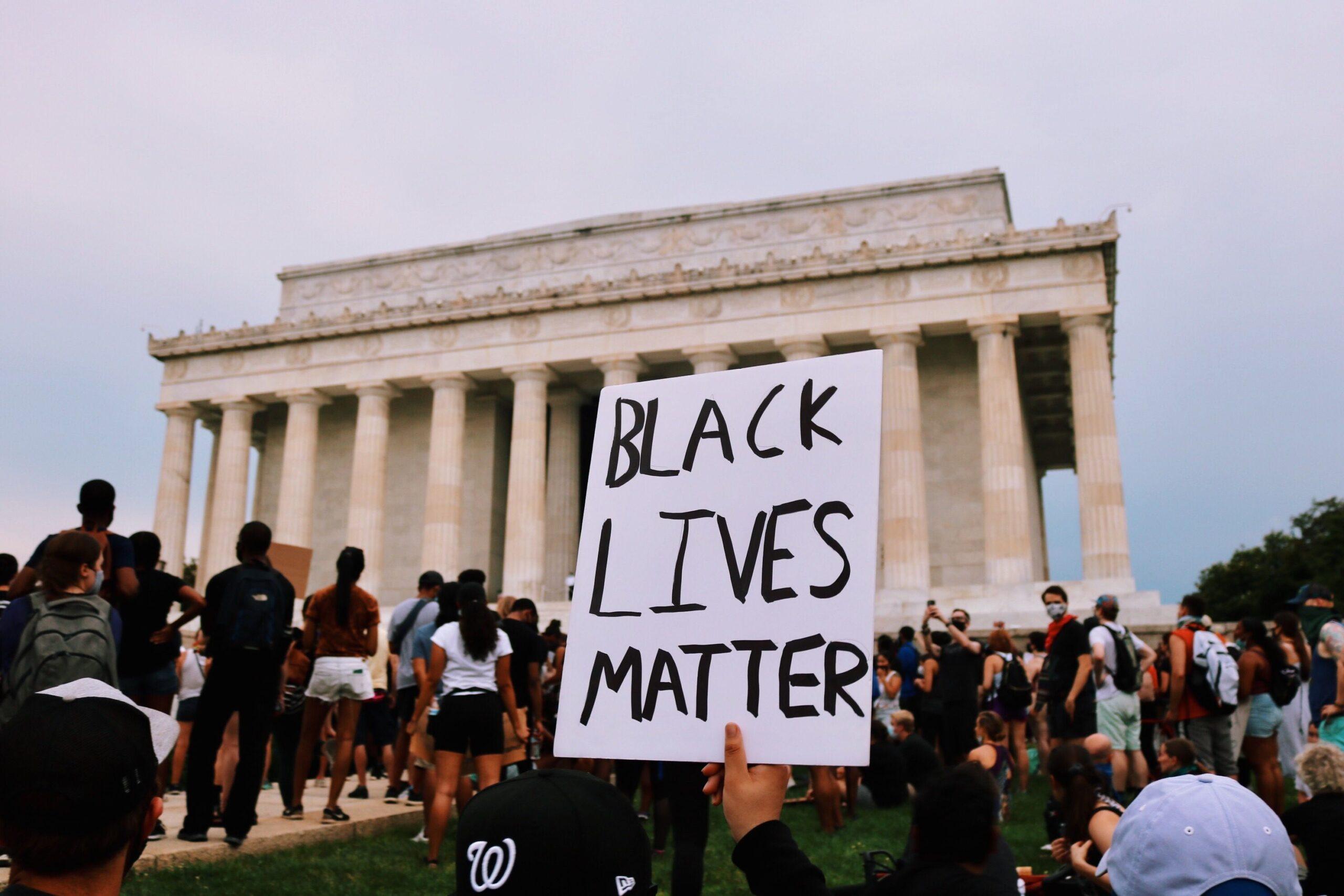
Black people have been fighting police violence since at least 1919, the year of the Red Summer Chicago riots. The first direct response to police brutality came in 1935, in Harlem. By 1951, Black people were marching to the United Nations holding petitions that read “We Charge Genocide,” a rallying cry to upend the American government’s systemic slaying of Black people. Through the civil rights movement, King’s assassination, the rise of the Black Panther Party, the Rodney King riots in Los Angeles in 1992, and beyond, the rage has never settled, sparking new generations of activism. The last decade has seen the rise of the Movement for Black Lives (colloquially known as Black Lives Matter), a decentralized network of activists across the country dedicated to the fight for racial equity and an end to police brutality.
From our television and cinema to our athletic fields and anthems, police are often positioned at the very center of American culture. Their prominence gives them a baked-in shield against accountability. That cover rises even to the highest court in the land. The Supreme Court declined to hear a case this month challenging the legal doctrine of “qualified immunity,” which shields police officers and government officials from lawsuits related to their conduct. Alex S. Vitale, the author of The End of Policing, calls police officers “violence workers” because of their ability to cause harm and escape punishment. Violence is the root of policing, Vitale says, which exists to maintain an American social order that broadly favors white Americans.
In simple terms, the creation of law enforcement in America was designed to protect white wealth at the expense of Black people. Antebellum slave patrols evolved into modern police departments, which have yet to wholly reconcile with the history of terror they’ve inflicted on Black communities. These patrols served to control enslaved people and protect white landowners. As the abolitionist movement arrived during the Antebellum era, these patrol forces evolved into sheriff’s offices that enforced segregation and terrorized Black citizens, often under the guise of the Ku Klux Klan. Jim Crow gave way to Black codes, mandating strict rules of conduct for freedmen. In the North, police used violent force to break up Black labor strikes. For Black people, American police forces were not designed to deter crime, but rather as a tool of Black suppression and horror, a beacon to white supremacy. Frantz Fanon wrote in The Wretched Earth that “the police man” is a symbol of social order, “the official, instituted go-betweens, the spokesman of the settler and his rule of oppression.”
There are many campaigns that have been waged over the last few years that have now been able to use this moment as a crucial leverage point and a pressure point.Phillip Agnew, cofounder of Dream Defenders
This legacy of law enforcement is part of the current running through today’s protests, informing activists’ policy proposals—to defund police departments, ban illegal choke holds and other tactics, and, in some cases, to dismantle and reimagine law enforcement.
What’s different about this recent spate of protests, says Phillip Agnew, the cofounder of the activist group Dream Defenders, and a senior adviser to Senator Bernie Sanders, is how organizers are using the moment as a cudgel to advance policy proposals and conversations about equity for Black citizens. “There are many campaigns that have been waged over the last few years that have now been able to use this moment as a crucial leverage point and a pressure point,” Agnew tells me. “And so universities and schools and school districts are cutting off their relationships with police. Police are now being arrested and charged far more quickly. We have people in office who are amenable to the desires and the demands of the common people or the people that they claim to represent.”
Another of the many reasons this moment feels different is the conversation around defunding police departments—or even wholly abolishing them. It’s not a new idea in organizing circles. The concept of reallocating funds from overly militarized police departments to other municipal agencies benefits under-resourced communities. It also takes the burden off police to be everything to every community. Even abolishing the police isn’t always meant to get rid of law enforcement, but rather to rethink it drastically. The problem has always been the root of the tree, not its branches nor its sour apples. Radically transforming policing systems is tantamount to ensuring a modicum of Black safety in America.
“Our cities and our elected officials are failing us,” Miski Noor, a 34-year-old organizer in Minneapolis, tells me over the phone. “And so how can they be held accountable? How can we [take] back from the institutions that are killing us and killing our neighbors? How do we really [feel] about forcing the country to reckon with the promises that it made around life, liberty, and the pursuit of happiness for everyone?”
These protests began in Minneapolis after a white police officer, Derek Chauvin, killed George Floyd by placing his knee on Floyd’s neck for nearly nine minutes; Floyd cried for help as three other officers stood nearby and watched. It took four days for Chauvin to be arrested and charged with third-degree murder and second-degree manslaughter. Almost one week after that, Minnesota Attorney General Keith Ellison upgraded Chauvin’s charge to second-degree murder and charged the other three officers with aiding and abetting. Activists in Minneapolis say the city’s police department has been operating with impunity for too long. Chauvin has been named in at least 17 misconduct complaints in his career. In 2015, the Department of Justice issued a review of the city’s police department and cited its need for systemic reform. After an officer killed Minneapolis resident David C. Smith in 2010, Smith’s family reached a settlement with the city, which was supposed to require additional training to prevent police from ignoring positional asphyxia, like placing a knee on the nape of a civilian’s neck, as Chauvin did to Floyd.
In 2018, responding to pressure from organizing groups, including Noor’s Black Visions Collective, the city diverted $1.1 million in funding from the police to community-based safety initiatives. Minneapolis even hired the city’s first Black police chief in 2017. None of it prevented Floyd’s killing, which is why activists like Noor are calling for the defunding of the department. “Arresting one cop or charging one cop, or one cop actually going away, does not stop the system of terror that is smothering and brutalizing Black folks and marginalized folks in poor communities all across history,” they say. “So we actually need to uproot the system that dehumanizes and denies the humanity and dignity of Black people in order to actually realize a world in which we all can be safe.”
This line of thinking is consistent in organizing groups nationwide.
“This is bigger than civil rights; this is human rights,” Agnew said. “Those are the basic material benefits. And it’s those things in addition to everything that we’ve been entitled to. This is a movement that understands that Black people—Black women, Black men, all Black people—are the foundation of the wealth of this country, and we’re entitled to have basic human things and dignities.”
Ending racist and corrupt policing is the chant of the moment, of the last decade, of my lifetime. But it is only the tip of a massive iceberg; the rest is floating beneath the American purview. The same restructuring and abolishing of institutional racism must come in our housing policies, our workplaces, our faculty, all of the avenues in which discrimination ghettoizes Black people and prevents the true democratization of this nation.
This is not the turning point, nor the end. It is merely a cumbersome roadblock keeping us from dismantling the faulty logic underpinning the Founders’ American experiment.
“We’ve got to prove ourselves to be a consistent agitator and continue to push the campaigns locally, statewide, and nationally that we need in order to see this thing through,” Agnew says, and stresses an important note.
“It’s not going to be over anytime soon.”
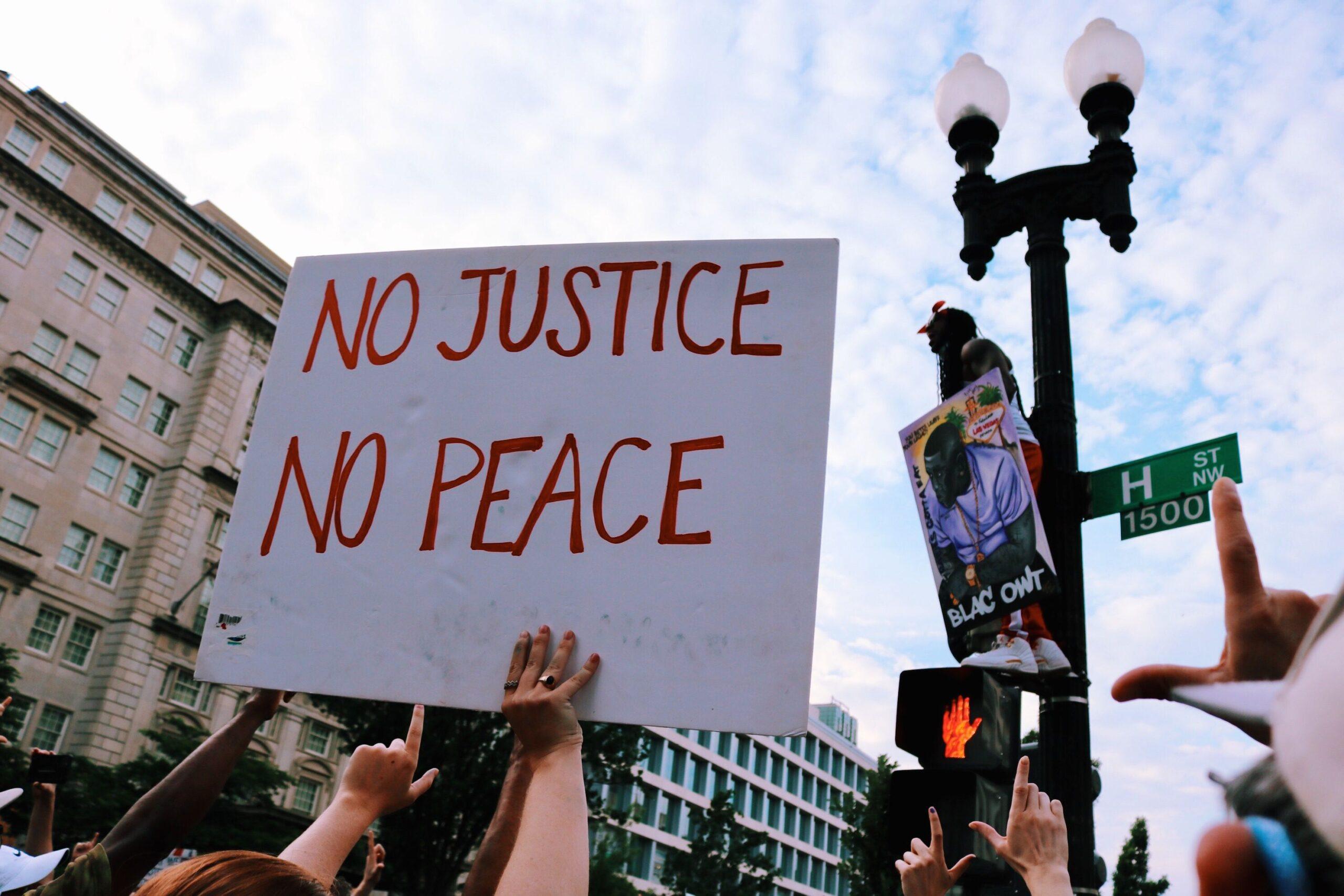
It is consistent with the history of policing in this country that demonstrations against police brutality would be met with violent force. It should disturb us as a citizenry that we are willing to launch tear gas to disperse crowds of peaceful protesters so that the president can walk down the street. The peace I found in Washington came only after a raging storm. When I first arrived, the city felt like a war zone. Almost every business near the White House was boarded up with plywood. Shaynna Ford, a 31-year-old SoulCycle instructor from Virginia, tells me she was tear-gassed and shot with rubber bullets while demonstrating in front of the White House. “It has been, emotionally and physically, the most draining experience of my life. I don’t know if there’s anything to prepare for it, but it’s psychological and physical warfare. I’ve cried every single day. Full breakdowns,” she said. “I mean, I got shot for God’s sake.”
A 21-year-old from Bowie, Maryland, named Vernon was also in the streets when the gas was released on citizens. He says he initially thought the sharp pain in his leg was from a mosquito bite. Then he saw the National Guardsmen approaching. “They gassed us every 20 minutes. Then they’d advance about 10 feet. And it was unprovoked. It was just to get us out of the city.” Vernon says he was jabbed in the neck with a riot shield. His mouth still burned four days later. “There was no reason why our right to protest was disrupted.”
In his first term, Trump has shown that he believes violence and strength are synonymous. Therefore, his solution to the problem of police brutality involves more violence. He defended law enforcement as the protests raged in Washington and across the country. “Without police, there is chaos,” he said, even as he uses law enforcement to batter dissenting Americans. Larry Bryant, a 53-year-old Washington native who works for the ACLU, says he’s been attending protests for decades. “To see the kind of hate coming from the other side, not just the intent to clear but the intent to maim, to hurt, to inflict pain, I haven’t seen this since the civil rights movement,” Bryant tells me. We’re standing in front of the White House and Bryant is wearing a Colin Kaepernick 49ers jersey, a familiar sight in the streets. “I trust us,” Bryant says. “I don’t trust the people on the other side of that fence.”
The crowds grow as I walk down 19th Street Northwest. Hilda M. Jordan, a Black queer woman and a recent Harvard graduate, shouts down the corridor. She promises the crowd that they will not be silenced until “blood stops running down the streets” from the deaths of Black people at police officers’ hands. Jordan tells me that being out here isn’t a choice for her, but a necessity. She feels like Black communities are out of options.
“Black Lives Matter yesterday. They matter tomorrow. And I’ll be damned if I don’t try with every fiber in my being to get justice for George Floyd, for Breonna Taylor, for Tony McDade, for Manuel Ellis, who was killed today!” she says to the crowd. She starts crying. “Ahmaud Arbery,” she says, her voice cracking. “Sandra Bland.” She cups her mouth as she realizes that she might be here forever if she keeps rattling off the names of victims of police brutality and racist killings. People yell through the silence anyway until she finally finishes her call to action. “Until there is justice there will be no peace!”
That night, it rains, part of a frequent chorus of precipitation that visits Washington all week. Even the heavens weep at the sight of our nation’s capital. I assume rain of this magnitude will deter even the almighty as it ramps up to a thunderous bash on the pavement below our feet. But something magical happens. The protesters stay. They walk to the White House gates. They chant through the downpour for a moment that feels like it will never end.
“This they last chance,” R.J. Rock, a 29-year-old from Philadelphia, tells me as he holds an American flag over his shoulder. “I want peace. I don’t wanna do this shit again. I’ll stand out here all night if I have to. They got one more chance. Or they’ll feel the fear of God. All we want is peace. All we want is equality. All we want is for Black lives to matter.”
Protesters rattle the gates outside the White House; the barriers feel like a cage to keep the president from the power on the ground. I see a Black woman through the rain, holding a sign that says, “Black Lives Matter And Don’t Fucking Forget It,” her gaze fixed straight ahead. I choose to believe it is her strength at a moment of weariness, not the rain, that causes the National Guardsmen to stand down that night. Droplets gently tap the ground, and the streets are clean for the first time all day.
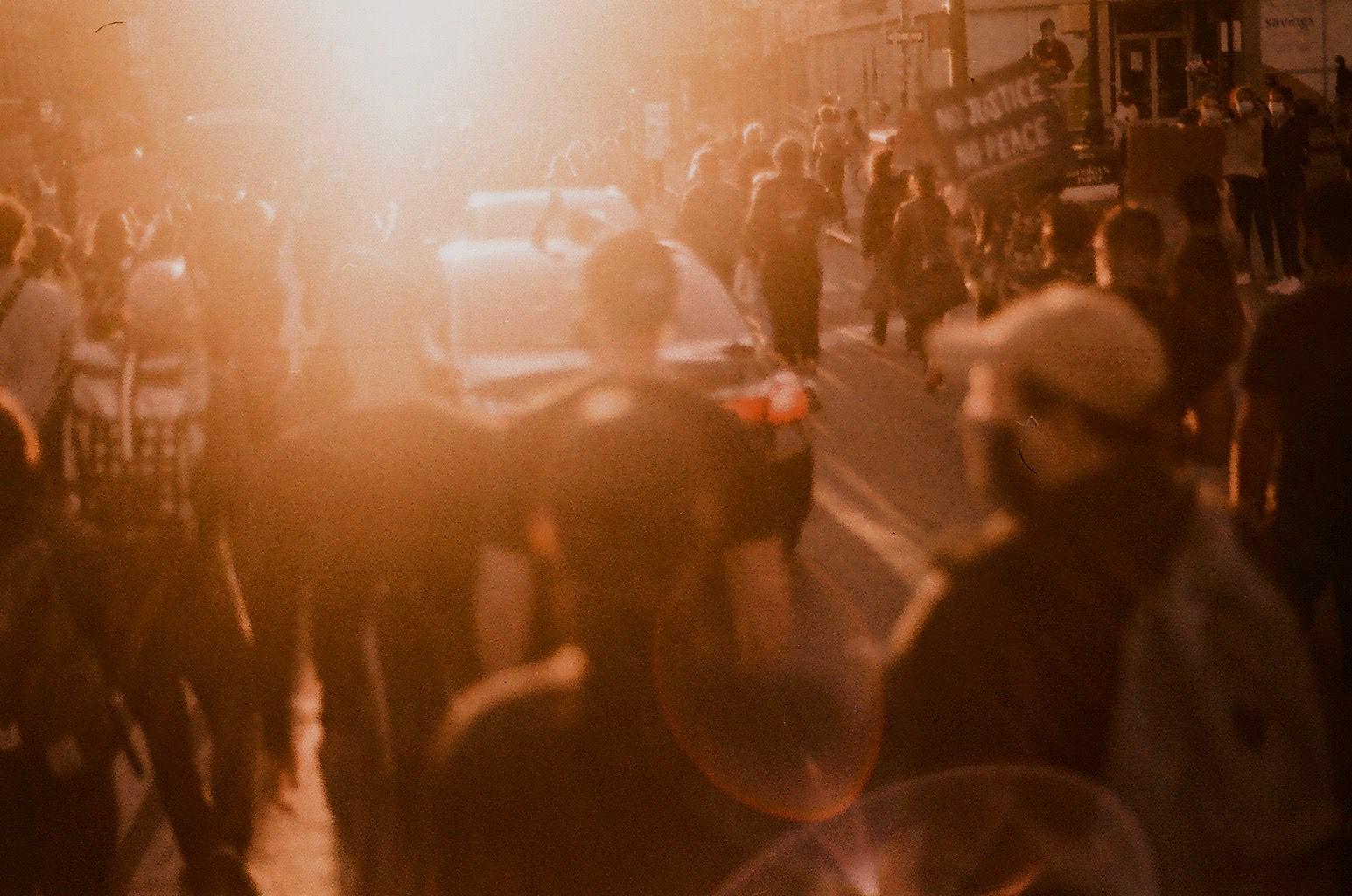
The next day, I drive to Prince George’s County, Maryland, a few miles away from Washington. P.G. County once had the most enslaved people in the state; now it’s home to one of the richest Black suburbs in America. Despite its wealth, the county’s residents can’t escape the panic that comes from American policing.
Residents march through the town and circle the Prince George’s County Courthouse. They cry together and hug one another, to remember the people they’ve lost, and because many were seeing their friends and families for the first time in months because of social-distancing measures brought about by the coronavirus. Many have asked how people can bring themselves to the streets amid a pandemic, especially one that has disproportionately affected Black communities. It is likely because police violence is also a public health issue. The broader impact of racism as a social determinant has killed people. There are two wars against humanity with competing claims on Black people: one calls for us to stay at home, another to stay in the streets. Black protest and, indeed, Black survival is a continuous war against the limits of legal emancipation. Freedom was never truly meant for us.
“We are gonna fight! This is a battle we are gonna win,” Justin Alexander, a 23-year-old organizer from Bowie, Maryland, tells the crowd through a megaphone. A sea of citizens, almost entirely Black, started repeating the names that brought them into the streets. George Floyd. Breonna Taylor.
“I want to hear you,” Alexander says. “I want them to hear us up in heaven.”
We actually need to uproot the system that dehumanizes and denies the humanity and dignity of Black people in order to actually realize a world in which we all can be safe.Miski Noor
Officers look down at the crowd from inside the brick courthouse. People shout at them to come out of their castle to confront the people and their plight. A moment of silence is held for Floyd, to signify how long Chauvin’s knee was glued to the scruff of his neck. As Floyd cried out for his dead mother and said, “I can’t breathe,” he was alone, in pain. The thought sparks a visceral reaction from the protesters. We ache for a man who can see death approaching him, trying his damndest to escape it, so much so that he sought the help of ghosts.
It guts me to see these Black people grapple with that pain. They are on their knees, praying for change, calling out the names of the past, like Floyd’s. Names killed this morning. Names killed yesterday. Names killed by law enforcement. Names killed by this land. It is supposed to be a silent moment of meditation. But I can hear people sobbing. There is an uncountable number of names, from every state in this nation, from every decade in this country’s history. How America has systematically and methodically stripped away at the Black body until those people are left dead and defeated, killed without consequences, razed from the ground it walked. Nine minutes turned into 20, and they still aren’t done.
A 21-year-old protester named Nieya Burch grabs a microphone. She turns her attention to the officers keeping guard nearby. “At the end of the day,” she says. “This system don’t give a fuck about you, either. You should be ashamed to wear that badge!”
Burch tells me she feels like something has shifted in America. “I ain’t never did no shit like that before. It was an out-of-body experience. They don’t give a fuck,” she says of the police. “That man’s knee was on his neck. He was smirking. It sends a message that they can get away with this. And they”—she pointed to the officers nearby—“are protecting that. That nigga right there!” she says, now pointing to the officers in the courthouse. “Don’t stand behind those walls. Stand with us. They been killing us for 400 years and they not gonna stop. Last time I checked this was the richest, Blackest county in America. But where we at, though? Remember why we here, because any of us can go at any time. Black lives matter. And we on they necks nationwide, baby.”
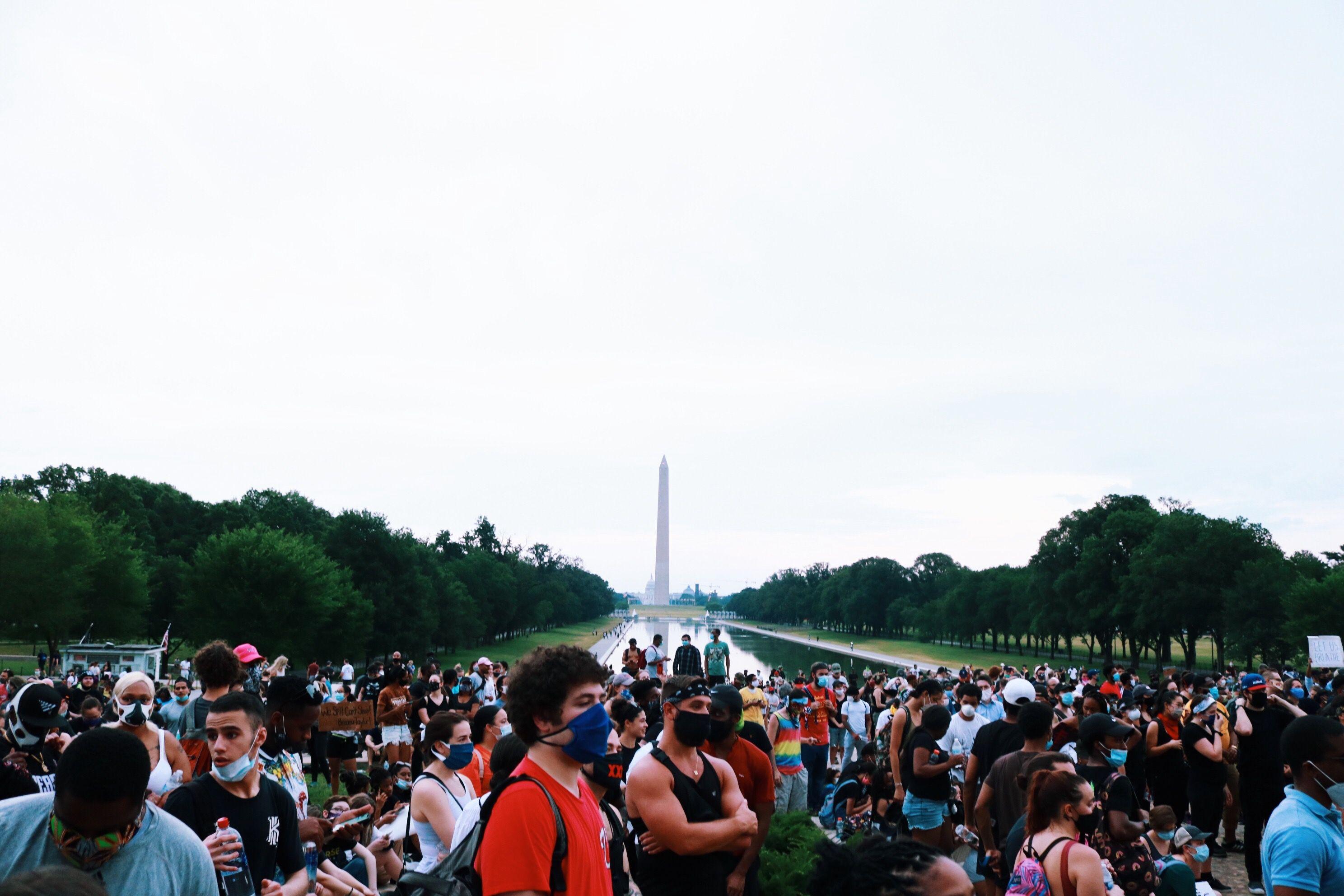
The next day, I drive to Baltimore. Charm City has seen these kinds of protests before. When officers killed Freddie Gray here in 2015, rebellion and civil unrest erupted in the city for days. I go to a food drive at Baltimore Community College with Kwame Rose, a local organizer, who introduces me to Mayor Bernard C. “Jack” Young. I ask Young what he thinks about the protests, especially after Baltimore’s experience in the wake of Gray’s killing.
Young acknowledges that the protests have been peaceful, but then, strangely, takes a different tone.
“They say Black Lives Matter, but do Black lives really matter when we are killing each other across the country?” Young says. “I think we should reexamine Black Lives Matter. Because all lives matter. We have people killing each other every day. Where are the marches for that?” I ask him what he means. “I wanna see protests when Black lives are taken at the hands of other Blacks. There’s no type of code when it comes to killing each other.”
Young says he wouldn’t allow a repeat of the civil unrest that accompanied the protests after Gray’s death. “It’s not 2015,” he says. It’s a baffling thing to hear. Young took office on an interim basis after a scandal uprooted his predecessor, Catherine Pugh. His job is to maintain balance until the end of the year, when his successor is voted into office. Perhaps he sees no political cost for what he’s saying.
“When they talk about police brutality and how they don’t like police, police are benefiting because of overtime. And as long as they protest, the police budget is gonna be bigger and bigger,” Young says. “This is nice,” he goes on. “But the protests can’t last forever.”
As Young, 65, leaves to talk to volunteers, Kwame turns to me, irate. “Fuck that shit!” he says. “We all know that some older Black people skew conservative and there’s trauma from the old history of the civil rights movement with leaders being arrested and harmed,” Kwame tells me. “That’s why what America needs right now is progressive Black leadership. We’re still laying our bodies down for change even at this point. We are all absolutely sick and tired. By the end of the summer, I hope white people see the harm they’ve caused in our communities. By the end of the summer, we want to see change that tangibly meets the needs of Black people that dismantles white supremacy, which has lived in this country for 400 years.”
It has been, emotionally and physically, the most draining experience of my life. I don’t know if there’s anything to prepare for it, but it’s psychological and physical warfare.Shaynna Ford
In Baltimore, neighborhood blight has existed for decades, and the plywood that is temporary in other cities is a permanent fixture in parts of this one. At times, it can look like an abandoned wasteland, the result of sharp population declines, strategic disinvestment, white flight, and segregation. The city’s reimagining, as explained to me by Black residents, will largely come from a younger group of Black organizers.
At Morgan State, a historically black college in Baltimore, that new generation of organizers is protesting—and for many of them, it’s their first time. Protests in Baltimore have usually focused on City Hall and police stations downtown. But Morgan State is in a residential neighborhood a few miles outside the city’s center. When I visit the campus at the corner of East Cold Spring Lane and Hillen Road, I see a beautiful assortment of people: Afros and locs, short hair and straight, every shade of a bountiful, Black rainbow under an umbrella of historically Black excellence. Gorgeous durags become crowns. Kente face masks become shields. Black power and pain blossom to pride. There are even a few Lamar Jackson jerseys—Baltimore does love their own, after all. The demonstrators silently march to a circle in front of Holmes Hall, named after Dr. Dwight Oliver Wendell Holmes, a former university president who oversaw Morgan State’s rapid growth after World War II. Wesley Hawkins, a 34-year-old Baltimore native, stands in front of them.
“Say I’m TIRREEDDDD!!” Hawkins says.
“I’m tired!” they respond.
“Right now, I don’t believe y’all. This ground should be shaking ’cause there’s enough of us. And if you really mean that with you heart and soul let me hear you say, I’M TIRED!!”
“I’M TIRED!” they say, springing to life.
“That’s something that really means everything to us,” Hawkins says. “This really resonates in our souls. We are losing sons. Brothers. Neighbors. Teachers. Daughters. Children. Sisters. To police brutality. I’m from a community in Baltimore where you can get pulled over, and when you get pulled over, you scared for your life, no matter how educated you are … I’m not sure if the police will kill me or not. I shouldn’t feel that way. I’M TIRED!”
“I’M TIREDDDD!”
“I’m tired of being afraid for my life for only making a wrong signal. I’m tired of being afraid for my life if I feel like I want to call the police and they harm me and not protect my actual community. And everybody standing right here, you knowwww it’s wrong. Or you wouldn’t be here. You knowww we need change. Or you wouldn’t be here.”
His singsong cadence carries the students and citizens through the streets. Among them is David Wilson, the president of Morgan State. “I’m so proud to see so many Morgan alums raising their hands saying injustice is something we will not embrace and racism is something we will not embrace,” he tells me. “The founding principles of Morgan are based on inclusion, the elimination of racism, and the elimination of injustice. Those founders gave rise to this institution 153 years ago based on those principles.”
This Black institution gave a home to the progeny of the enslaved when America turned its back on Black students looking for the same education as their white counterparts. “For me not to be here today,” Wilson says, explaining how some of these signs brought tears to his eyes, “would be to dishonor the founders of this great institution. I’m proud of our alums and the fact that they’ve attracted a couple thousand or so gathered in peace to say we deserve to live.”
One of those alumnae, Joy Barnes, rallies the crowd near where Wilson and I speak. Barnes, a 23-year-old teacher, says something that stays with me even after I leave Baltimore. She tells me she wants folks to be here with a purpose, not only with a sign.
“This is a moment,” Barnes says to the crowd, “but we are not here only for moments. One person can make a change. Our entire community can change the world. We got the globe yelling Black Lives Matter. It’s not enough to just be here in this moment. We need to mobilize. Now is our time.”
And so they march. Their passion projects through the county as living Black history, past the Thurgood Marshall apartment complex and into the streets, where the only thing holding these Black folks back, both here and everywhere, is their chains.
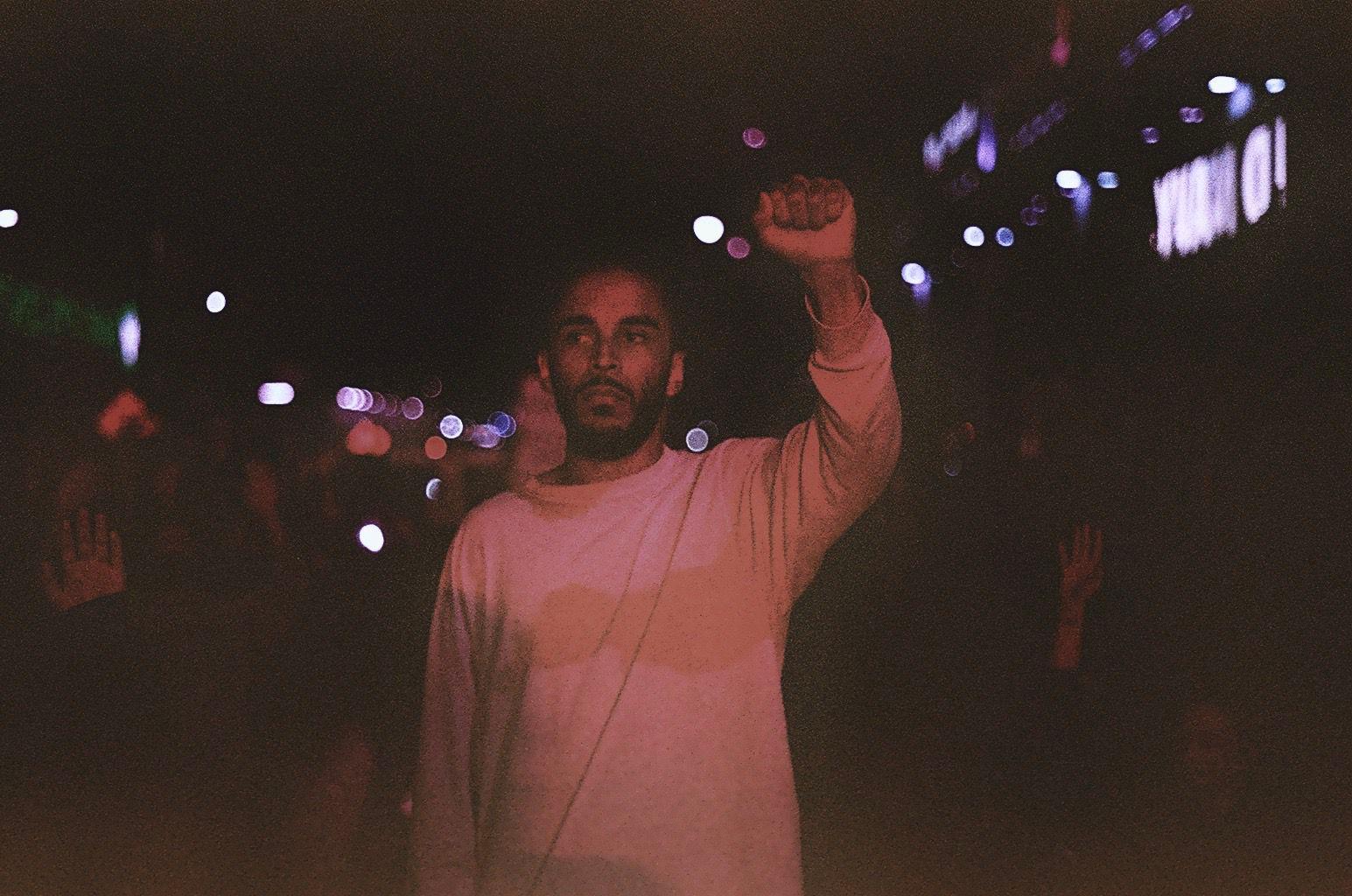
It’s difficult to articulate how fed up so many Black people I’ve spoken to at protests are. There has never been a true reckoning with the 401 years of racism inflicted on the Black body by this land. These moments—protests, uprisings, and rebellions—are a small remedy for the larger disease. The great evil of chattel slavery wasn’t only involuntary service to whiteness. It was the idea, the insidious proposal, that Black people aren’t as good as or equal to white people. That we are uppity if we refuse servitude to whiteness. That remains true now. The physical chains are gone, but the structural ones remain unbreakable. So many people, including the author Bryan Stevenson, made plain a horrifying truth: In this way, slavery never ended. It merely evolved. Raging against a machine dictating we are less than people usually spells our demise.
That violence was on display in Philadelphia this month. Police launched tear gas at a major intersection near the Benjamin Franklin Parkway and confronted peaceful protesters in West Philly. When I drive to the blocks near 52nd and Larchwood streets, people are still out marching, fighting for freedom.
In a nearby community center, Black organizers and residents, young and old, meet with some of the top brass from Philadelphia’s police department to debate how to fix their ailing city. The meeting intends to be a safe forum to discuss how policing affects residents in ways officers may not understand, as well as a way for officers to express their own feelings about ongoing protests. It’s organized by several politicians and begins with good intentions—finding better ways for members of a community and law enforcement to understand each other’s perspectives. But it becomes a focus group to try to assuage Black pain in a neighborhood close to where, in 1985, police bombed the compound that was home to the Black liberation group MOVE, an act for which the city never apologized.
Younger folks in attendance, like Maya Pollard and her brother Mikel, and Keyssh Datts and her sister Lezetora, wanted answers. Maya tells the officers in attendance, all of whom are Black, that they need to understand the history of the badge they choose to don.
“Dig deep,” Maya says. “Because I have dug deep and I’m not even in the system. … And I’ve learned a lot. And I feel like if you have learned what I have learned, then there might be new outlooks.”
As the officers look on, some laugh, or peer down into their phones. It’s as if they don’t understand what’s being asked of them. How can they unlearn the fact that they’ve been pushing, as a system, white supremacy locally and nationally? How do you defund the police when many of them believe the system is working, even if it isn’t fully to the community’s liking? Some of the officers even dash to the back of the room near hot food platters to avoid engaging in questions.
Exhaustion exudes from the younger group’s bones. It’s as if the temperature has risen, and I find myself surrounded by flames, like hell went on vacation and paid a visit to earth. One officer takes a condescending tone, saying that the young adults can be “woke and work with police as well.” Attitudes quickly turn. Cops smile smugly. The same officer advocates for the use of tear gas a few days after officers deployed the substance on protesters in this very neighborhood. Maya begins crying.
“This shit breaks my heart,” she says.
“Somebody has to say they’re going to be in charge of the chaos,” says Robin Wimberly, a deputy police commissioner. She places the onus on the residents in attendance to change, saying that they need to “become the teachers” if they want to see change.
“I can’t be teaching if I’m teaching them lies,” Maya shouts back.
The meeting’s moderator, Erica Atwood, the chief of staff for City Councilwoman Jamie Gauthier, interjects.
“I don’t want to meet just to have conversations. We need to meet to build a strategy,” she said. “I want to give honor and homage to the emotions that you gave us today and that you felt. I know you’re real frustrated right now; you have every right to be. You have every right to be. But what I want to say is, we’ve got to figure this out in a way that won’t be [us running] up against a brick wall and shit just falls to pieces.”
Maya stops crying and nods.
“That path has to be fueled by what you’re feeling right now,” Atwood says. “And I know, and I’ve been there. Trust me. If you met me when I was 24 years old, I was trying to burn everything down, but I got here at 46, all right? So I encourage you, I’ll give you a box of matches, but at some point we’ve got to build a roadmap, and it’s going to take us a minute to get there.”
After a few moments, Maya dusts herself off. Crosses her legs. Raises her shoulders. She blows her nose and turns back to Atwood.
“When you say you gonna give me the matches to burn it down,” Maya says, her voice rising to a steady build.
“Mhm. Yes, honey.” Atwood replies.
“Please let me know when you ready. Because I will. I’m ready. And the people behind me?” she says.
“They been ready, too.”
